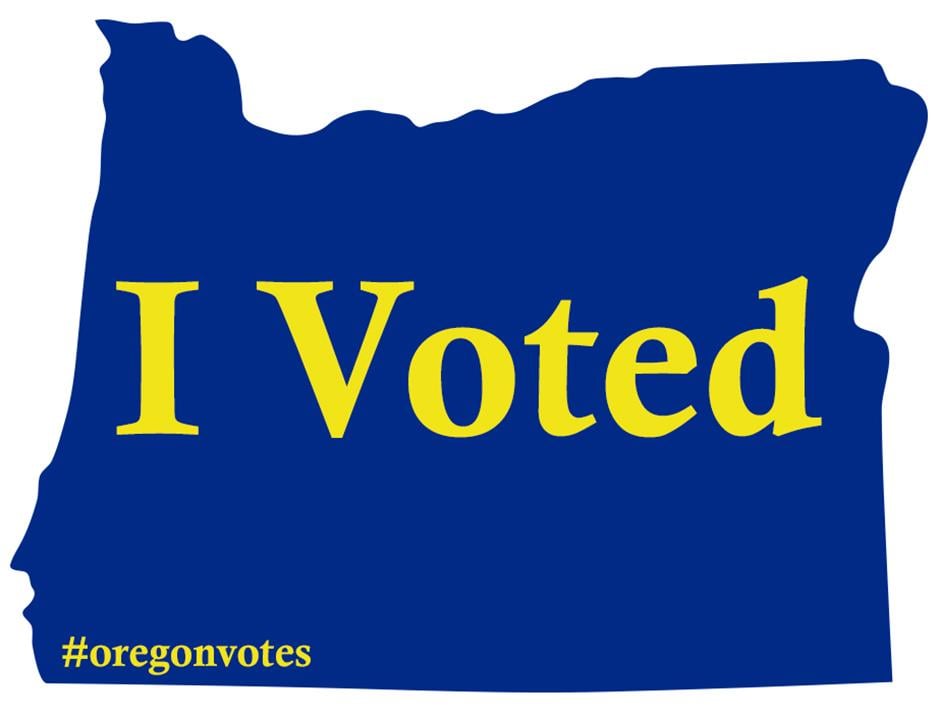I watch a lot of Dead Mall videos on YouTube and I wanted to see what everyone’s thoughts are on why there’s so many dead malls now.
Hrm. No one has mentioned the decline of middle class wages.
I remember in the … late 70s/early 80s my mother would drag us to the mall nearly every weekend. She was there to buy clothes. She always wanted something new and she wanted to try on at least a dozen items before buying one or two. I was thrilled when I was old enough to go off to the record store and/or hobby store while she did that. Earlier, I begged to go the the toy store, but was typically refused. Later, I was at the book store getting paperback scifi.
I don’t think people have as much disposable income as they did then. I don’t know many people who can buy as much frivolous stuff as my folks used to. I guess I could technically buy stuff all the time, but I want to save fore retirement. My folks had pensions. I have to put it away myself.
The disappearance of defined benefit retirement plans is yet another way those on top are boning us, and it is NOT being talked about enough.
It actually screws us 2 ways. First, by removing liability/responsibility from the company and putting it on people. Second, by forcing everyone to have to car about the stock market, and be subject to its whims
Not to mention storage space. Like most people their generation, my parents have a garage and an attic. All this extra space to hoard stuff
I’ll also offer the “sameness” of everything at malls. Let’s say you want jeans. There’s five shops that carry jeans. You want “normal” jeans, iow, not torn, not bleached, etc. Each shop carries jeans, but they are all some version of torn, worn, bleached, etc. For all the variety, they’re all the same.
Plus, mall overhead and branding makes the shops quite often more expensive than you might find at something like a Target or even a Kohls.
I’ve found that taking my kids to the mall to check out clothing we more often than not buy nothing despite visiting a half dozen shops. It’s all variations of the same thing along with being designer pricing.
So I’m not in America and might be able to offer some insight. Others have mentioned big box stores, online shopping, and lack of money as the main culprits. I’m fairly certain big box stores are not it, and the fault may lay almost entirely on amazon.
Where I’m from, malls are still the place to go for new things to buy, including electronics, clothes (of varying degrees of quality and price), drugs (the legal kind), and home decor. Businesses like Walmart (as in, supermarkets that sell things other than groceries) have shops inside those same malls. In the whole city, there is one standalone Walmart, in the emptiest part of town with middle-upper class suburbs around it. The one exception is Costco, which has two franchises in town, not inside a mall, but the demographic that goes there is decidedly middle class families and businesses.
We can order stuff from amazon, but it ends up being about the same in terms of cost, and takes up to a month to arrive. Money is tight for pretty much everyone at the moment, but we all still go to the mall from time to time, for one reason or another.
For example, I’m overdue a visit to get my eyes checked again, my glasses need replacing. And I’ll probably stop by the radioshack (yup, remember that?) and nab some rechargeable AAs.
Malls were dying in the US well before Amazon and online shopping itself was meaningful. Big box stores did a number on them. Best Buy and Circuit City had nearly the same selection of music that mall music stores did for much lower prices. Stores like Barnes and Noble and Books-A-Million eviscerated the smaller more expensive mall book stores. Walmart, Target, and the like hit everything else.
Once that decline happened, I noticed that many malls started going after the kids that just hung around malls and weren’t in constant spend mode. Teens were treated like pests that were not wanted. Guess who got the message and didn’t come back a few years later when they had jobs and money?
Malls in the 80s and early 90s were pretty awesome, but malls told us to fuck off so we did. They can rot.
Interesting. Malls around me seem to cater mostly to young adults with expendable income. Lots of non-traditional cuisine (commercialised of course, not high-brow places), wine bars, etc. Places where you’d go to on a night out with the gang.
Now that you mention it, they have stopped catering to the youngest demographic. I think the laser tags closed down before the pandemic, and the arcades have been gone for a decade. Unless Chuck E. Cheese has some, I haven’t been. Maybe we’re catching up, then. I still see young teens, around the age I was when I visited those places, walk around. No idea what shops they go into though. Maybe the ice cream places, and the food court.
Malls were being killed by big box complexes before Amazon was prevalent, but the one-two punch didn’t do them any favors.
I see it as a combination of things…
Big box retailers.
Online sales.
People stopped going to movie theaters.So what’s the reason to go to a mall? Crappy food court food?
So what’s the reason to go to a mall? Crappy food court food?
The last dozen or so times I’ve been to a mall, the only thing I’ve spent money on was food. It’s hard to justify spending money at the mall when I know I can get just about anything there from an online retailer for a lot cheaper. But I can’t get an Orange Julius online. Yet.
There’s a fuckin delicious Asian place in my local mall that has the best teriyaki chicken and fried rice I’ve ever had. That and Charley’s lemonade are a couple of the only reasons I go to my mall.
By charleys you mean the Philly cheesesteak place right? Love them, too bad there aren’t any near me
That’s the one. They also go by a different name in some other parts of the country, I think. I don’t remember what it is though.
There’s one about 45min away, just to far to justify, but maybe I’ll make it out there sometime
Out of curiosity; where are your grocery stores, pharmacies and post offices? Because here in Australia, most of them are in shopping centres (Aussie for ‘mall’). The vast majority of us go to do our weekly shop, grab medication, send back returns from our online shopping etc. so they’re still very much alive and well.
In America, there’s like 3 different things you could call a mall. When most people talk about them, it means a giant building with central indoor paths connecting a bunch of businesses. Typically, there would be a handful of “anchor” businesses, like department stores and a movie theater, and then space for a bunch of much smaller businesses in between including restaurants. These malls (at least the ones I’ve been to) for whatever reason don’t typically have grocery stores. I have seen pharmacies and small Dr’s offices in them.
Then there are “strip malls” that are typically a row of businesses on one side or surrounding a big parking lot. Typically grocery stores are in those.
Lastly, there’s “outlet malls”, which are often set up like a fake town with parking distributed throughout. They are commonly built on cheap land in the outskirts of towns, and they have mostly clothing. They are typically brand specific stores (e.g., Nike), so they are allegedly cheaper.
It’s that first category that Americans are going to be talking about if they just refer to a “mall”, though. The idea to have all your shops in a convenient place has been around forever, and still works great in many traditional business districts. The “shopping mall”, though, was somewhat of an artificial movement in the 80’s and 90’s that was always a bit destined to fail. Like people have said, the internet is partially responsible, but malls were hurting before the internet started really doing damage. In America, you basically have to drive everywhere, and if you are driving everywhere, it’s easiest to just drive directly to whatever shop you need. With malls, you have to park far out in a giant lot, and walk a long way to get to whatever business. You could call it lazy, but if you’ve only got a little bit of time after a day of work to do shopping, are you going to do the option where you get the task done in 30 minutes, or an hour?
Such an interesting perspective, thanks for your contribution! I guess our ‘shopping centres’ are essentially the first condition you’ve described that also have grocery stores attached, and it’s likely the grocery store (in Australia this basically means one of 3-4 companies) that are keeping these structures going in the modern age. Our shopping centres tend to be built ‘up’ rather than ‘out’, with 3-5 storey shopping centres (with up to 7 storey parking lots) being fairly common within city limits that are closely accessible to more than 50% of the population.
That being said though, I live fairly equidistant between two of the largest shopping centres in Sydney and still choose to go to my local, smaller, single-storey shopping centre which is very small by Australian standards (<40 stores) which feels much more like a ‘mall’.
Do you guys have a lot of standalone grocery stores that you can drive right up to, park, shop and leave? Because that’s definitely the minority here!
We definitely get most of our groceries from standalone grocery stores. For the most part, you drive right to it.
I just looked at some Sydney shopping centres, and they look much like our malls on the inside (except for groceries), but it seems like they are much more integrated in the neighborhoods. It looks like parking garages are more popular there than the giant lots here.
I just looked at the dead mall wikipedia page, and it has a picture of the century 3 mall. That’s a good example of what they look like here; separate from where people live, and surrounded by big lots. You can actually see the strip malls that replaced it all around it.
American malls are three categories. Generally when people say “the mall”, they mean big, indoor, enclosed malls. That’s what is dying a slow death.
A local example for me:
https://en.m.wikipedia.org/wiki/Clackamas_Town_Center

The problem has been the large anchor stores are going out of business and the stores that remain struggle to survive.
The kind of mall you describe, Americans call “strip malls” and are much smaller and open to the elements. A grocery store, maybe a bank, fast food, not an official post office, but a pack and ship location, sometimes a DMV. That kind of thing.
Strip malls also struggle, there’s one by my house where the big grocery store just closed leaving it maybe 50% vacant.
We also have stand alone grocery stores that aren’t part of strip malls that collect other small stores around it like mini-moons. Barbershops, laundromats, liquor stores.
As long as the grocery store operates, everyone does fine.
Edit Almost forgot… “Big Box Complexes”. Not really malls, just large block stores sharing a common parking lot. So like a Target, Home Depot, Best Buy, all stand alone stores with shared parking.
Take a Brazilian Lemonade recipe and sub in oranges. :) Make it at home.
Apparently there’s a recipe on that page. Here’s the same page without the crud: https://www.justtherecipe.com/?url=https://houseofnasheats.com/brazilian-lemonade-limeade/
Great website.
Oohhh, that sounds delicious! My old boss at work was telling me about Brazilian lemonades a while back and I’ve been meaning to try it at some point.
But I can’t get an Orange Julius online.
Uber Eats, Door Dash, Grubhub, etc. all exist for this exact type of purchase.
Although you will pay for the convenience, as opposed to it being cheaper like most other products since the physical store is still involved.
Yep, when you want your Orange Julius to cost $22
Right, there’s got to be a good reason to go to the mall. The successful malls still draw crowds because they have more than just stores and a movie theater.
Successful malls have an Apple Store, Tesla, and Louis Vuitton, which tells us something about who can still afford to shop there.
Paradoxically, I would still go to movies if they were willing to kick people out for using their phone once during the film. There’s only one theater in my area that’s strict like that.
When I was a teenager the local mall made it quite clear that they didn’t want teenagers in the mall. I think it just stuck for a lot of us.
The mall near me used to be a place where kids could get together even if they didn’t have money to spend all day buying things. They made a rule that young people in groups of more than 3 would be treated like a gang. I have no sympathy for them losing patrons.
It was always short sighted tax policy. We’re just living with the blowback.
But in 1954, apparently intending to stimulate capital investment in manufacturing in order to counter a mild recession, Congress replaced the straight-line approach with “accelerated depreciation,” which enabled owners to take huge deductions in the early years of a project’s life. This, Hanchett says, “transformed real-estate development into a lucrative ‘tax shelter.’ An investor making a profit from rental of a new building usually avoided all taxes on that income, since the ‘loss’ from depreciation canceled it out. And when the depreciation exceeded profits from the building itself—as it virtually always did in early years—the investor could use the excess ‘loss’ to cut other income taxes.” With realestate values going up during the 1950s and ’60s, savvy investors “could build a structure, claim ‘losses’ for several years while enjoying tax-free income, then sell the project for more than they had originally invested.”
Since the “accelerated depreciation” rule did not apply to renovation of existing buildings, investors “now looked away from established downtowns, where vacant land was scarce and new construction difficult,” Hanchett says. "Instead, they rushed to put their money into projects at the suburban fringe—especially into shopping centers.
http://archive.wilsonquarterly.com/in-essence/why-america-got-malled
That’s really interesting! I’d heard the white flight explanation for downtowns falling apart, but this adds a new layer to it
I long for third spaces.
The mall is an ouroboros that demands I spend. But if it had a park combined with it, if it was just a series of semi-connected strip malls around a central or spread out park/walking path I’d be there constantly.
The mall just isn’t a enjoyable place to hang out unless you truly have no other choice, and even teenagers who don’t are opting to hang online because it’s less expensive and doesn’t require transit.
Yes! I’m amazed at how few responses here bring up the lack of attraction in a mall. Nearly every square foot has been given up for dumb kiosks for cell phone cases or something like that. There’s just nothing to give some warm fuzzies about visiting - a water feature, a kids play area… Heck, I grew up near the first indoor mall and at one point they had a giant parakeet cage. If one landed on your finger, you could keep the bird.
What killed the mall:
-
It was an experiment on the 3rd place (read up on it) and it failed at that.
-
Big box retailers wanted big, huge, gigantic stores. So they left malls to open them.
-
Being surrounded by parking structures doesn’t look appealing.
-
High rent for mall space.
-
Amazon.
-
*Other entertainment options are much better now with streaming tv, video games, etc.
also a big thing was the rapid openings of malls in the 80s and 90s. honestly they opened too many of them then just kind of limped along as it was too hard to close and Sears kinda funded them till their death.
Being a 3rd place you can’t even walk to because you have to cross those huge parking lots and all the traffic they bring. Not to mention none of them had decent places to actually collect and hang out.
Big box retailers want to own the property they’re on. Most of the time they own the property any other shops are in even in their lot. Big box has a huge realty presence. They out malled the malls in this regard.
Also people getting used to group chat and online games with friends, being able to socialize more effectively made activities like the mall pointless.
That’s why when you go to places where people used to hang out to socialise most people are just on their phones, the phone is better.
I sincerely hope that you don’t think that group chats, online gaming, or phones are “better” than true social life, because there is overwhelming science indicating that those things are making people absolutely miserable… and we actually don’t need science to see it everyday.
You’re right. At the same time, there are now alternatives that generally don’t require being in places that are trying to get you to spend money just to interact with other people.
-
Anecdotal, but I grew up in the heyday of malls and my local mall was one of the largest, and is now one of the most famous dead malls. The mall was in decline when Amazon was still in its infancy, mostly still selling books. Buying clothes online was considered lunacy at the time because there was no fitting rooms to try things on. Still, vacancy was on the rise in the mall and once a few violent crimes started happening inside that was all she wrote. “Big Box” stores like Walmart became more of a draw than driving all the way to the mall.
I think the reasons for the death of the mall are more complex, just like the death of the department store. There were lots of weird tax incentives, both for developers, and for (mostly white) residents fleeing the urban core during the 90s. Those were not sustainable. Malls themselves were a bit of a private equity shell game which couldn’t last. The story of dead malls is more about capitalism and land use policy than just Amazon.
I’ll never forget Forest Fair Mall in those first years though. It’s 1.5 MILLION square feet, and it was absolutely packed, especially during Christmas. Humongous fountains, sand sculptures, live music… every single spot of its airfield-like parking lot was full. The only thing today that I think comes close, if younger people want the experience, is the main concourse of a top ten airport.
I think the West Edmonton Mall comes pretty close at 5.3 million square feet. I remember seeing dolphins in there.
West Ed is still dope. I don’t know about submarines, but they have a 10/10 water park in there, and a bunch of other stuff.
The West Edmonton Mall used to have more submarines than the Canadian navy. I think that was before the dolphins though.
Malls were just a way to privatize mainstreet and allow the ownership class of capitalists to extract more money from a local economy through large chain stores and to give them private control over what used to be public space.
Now the middle class is worth a fraction of what it used to be, their purpose has dissolved.
People use Amazon instead of the mall because they can still afford the Temu-level garbage Amazon sells.
People use Amazon instead of the mall because they can still afford the Temu-level garbage Amazon sells.
I mean a few reasons.
- Pricing is better on Amazon vs mall. I can get a Gangsta Luffy T-shirt at $12 vs $20 at hot topic
- Inventory is significantly bigger. Outside of clothes, I can’t imagine not finding the exact online version and compare
- Malls are kinda ugly now. Many are indoor and just wall to wall commercialism.
- People suck. Naked dude stealing stop signs and angry Karen about the take a dump on the escalator.
- Driving vs ship to door.
- Both have temu-level garbage, but it’s cheaper on Amazon.
Both have temu-level garbage, but it’s cheaper on Amazon.
Currently, as they are dying today, yes.
This is not how malls have traditionally worked.
In the past, malls provided a plug-and-play way for national chain retail to offer premium, private-labeled goods that allowed them to extract money away from a community’s locally owned stores found on main street.
Indoor is good though. Floating around the mall is a good activity for shit weather days
How can I turn this into the class struggle?
The mall was dying by the 80’s, there was a sharp decline by then (I recall seeing numerous malls going vacant in the 90’s, around the country).
The things that drove mall popularity (especially things like large, enclosed, air-conditioned space), were no longer novel. Most cars were air-conditioned by then.
I’m sure there are many other factors, like the growth of free-standing single-vendor buildings (so construction and management costs must’ve changed).
Amazon really had nothing to do with it.
The rise of the suburban mall and its downward spiral are pre-Amazon, and largely had to do with tax decisions and costs to the public sector, though online shopping did accelerate the collapse. Slate, 2017: The Retail Apocalypse Is Suburban
Birthed by and killed by capitalism. Tone deaf retailers charging too much for not enough for too long PLUS general trend to take away “free” public places where regular people can casually gather and kill a few hours having low/no cost fun.
Amazon did more for killing off small businesses – the big box store chains did more for killing off shopping malls (their preference is the strip mall where they can showcase their entire frontage (and do an end-run around building codes))
and yes, everyone is too broke on top of everything else
I remember hearing that big box stores killed malls. I thought they killed malls, and Amazon killed big box stores, but Amazon can also kill malls, so it was a bit of a double-whammy for malls
More joint households have both members in the work force limiting the amount of shopping being done between 9-5. Add to that the ease of ordering shit online. All of which is on top of malls requiring minors to be accompanied by adults. Add it all together and the result is noone goes to malls anymore.
Plus social media and the internet. Malls used to be teen hangout places but now there are a million more options that don’t involve the hassle of actually going somewhere.
Conventional brick and mortar retail is extremely expensive to maintain. It has less to do with Amazon specifically, and more to do with the rise of online retail & direct to consumer business models more generally. Don’t get me wrong, Amazon was a huge pioneer in that area, but it would have happened one way or another.
our mall had an arcade, a waldenbooks, and a kiosk that sold gorgeous glass dragon figures.
can’t get any of those at amazon.
i miss it. :(
Dang, I kind of want one of those glass dragons. That sounds awesome






















